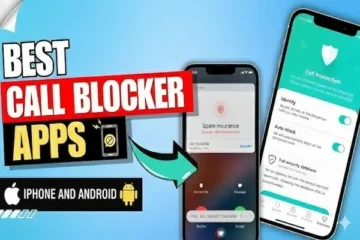Family Phone Plans: Parental Controls, Data Limits & Cost
Best family phone plans with parental control, data limits, and setup tips (2025).
Advertising
Why the best family phone plans put control before price
Families do not buy network speed in a vacuum, they buy peace of mind.
The best family phone plans start with parental control that is easy to configure and hard to bypass.
They add clear data limit tools that keep bills predictable even when kids stream or hotspot laptops.
They include screen time features that reinforce routines without turning technology into a daily argument.
And they layer shared data plans or unlimited tiers in a way that scales as your household adds lines, watches, and tablets.
All of this sits on top of transparent pricing, emergency readiness, and a setup flow that a busy parent can complete in under an hour.

Carrier comparison in lightweight lists: controls → price → benefits
Use the following neutral checklists to evaluate any carrier offer without heavy HTML or tables.
They are written to map cleanly to your region’s options and to keep your code lean on mobile.
Parental controls (capabilities to demand from any carrier)
- Single family dashboard that works on iOS and Android with the same feature set.
- Network-level web filtering that applies when the child is on cellular rather than Wi-Fi.
- Device-level hooks to Screen Time or Digital Wellbeing for time limits and app categories.
- Schedules for School Hours, Dinner, and Bedtime with guardian overrides and PIN protection.
- Per-app or per-category blocks with age presets and custom exceptions for education apps.
- Location sharing with geofences, arrival and departure alerts, and low-battery notifications.
- Support for kids’ LTE watches and tablets so rules apply consistently across devices.
- Change alerts for SIM swaps, new device activations, or unusual data spikes.
Data management and speed policies (predictability beats marketing)
- Shared data plans with clear pool sizes and rollover rules where available.
- Per-line data limit caps that throttle or block after a threshold you control.
- Hotspot quotas with on/off toggles and optional cooldown timers per line.
- Video optimization settings that let you lock quality to protect the shared pool.
- Priority or deprioritization disclosures written in plain language you can explain to a teen.
- Simple pathways to add tablets, watches, or trackers without reinventing your rules each time.
Price framing and family benefits (beyond a single “unlimited” label)
- Clear price for three lines and four lines plus the exact cost for each extra line.
- Explicit statement of whether taxes and fees are included or added on the bill.
- Autopay and loyalty discounts spelled out with required payment methods if any.
- Discounts or bundles for wearables, tablets, or home 5G gateways where useful.
- International talk and text that covers every line without per-line surprises.
- Optional perks like cloud backups or security suites described with opt-out steps.
Choosing the best family phone plans: quick priority filters
A short priorities exercise prevents buyer’s remorse.
Use these filters before you compare prices so you know what “best” actually means for your household.
- Safety-first: Pick the carrier whose parental control app you can understand and configure in five minutes.
- Budget-first: Prefer shared data plans with rollover and per-line hard stops or throttles to avoid overages.
- Heavy-use: Choose unlimited with clear hotspot quotas and honest priority thresholds during congestion.
- Travel-often: Favor simple international talk and text that works account-wide with minimal fine print.
- Wearables & tablets: Confirm kids’ watches and school tablets inherit the same rules automatically.
Parental control setup guide in four layers
Layering controls creates redundancy so one change does not break your entire system.
Each layer supports the others while remaining simple enough for busy guardians.
Layer 1 — Device foundations
- Create a child Apple ID or Google account with the correct birthdate and guardian approval.
- Enable Screen Time or Digital Wellbeing and set a parent passcode that is not reused elsewhere.
- Turn on age-based content ratings for apps, games, movies, music, and web content.
- Require purchase approvals and disable unknown or third-party app stores where possible.
- Define Always-Allowed contacts and apps so emergencies bypass downtime schedules.
- Enable device-finding services and keep Sign-in & Security recovery options up to date.
Layer 2 — Network protections
- Activate the carrier’s family filter profile for cellular data to block adult domains at the edge.
- Enforce safe search on major engines and video platforms when the option is available.
- Create School Hours and Bedtime schedules that apply regardless of Wi-Fi versus cellular.
- Switch on alerts for SIM changes, eSIM moves, and atypical data surges on any line.
Layer 3 — Location and check-ins
- Share location within the family group and add geofences for home, school, and practice.
- Teach kids a one-tap Check-In or SOS that shares live location and battery level.
- Review weekly location history with empathy to build trust and adjust rules kindly.
Layer 4 — Communication hygiene
- Define contact groups for family, school, and guardians.
- Block unknown callers if appropriate and enable spam filters for calls and messages.
- Use Do Not Disturb schedules with guardian overrides to let critical calls through at night.
Data limit and shared data plans without drama
A family plan succeeds when limits feel fair, not punitive.
Explain the “why” behind each rule, then set defaults that quietly protect your budget.
Family-friendly data rules
- Start with a family talk about caps and habits so kids understand the goals.
- Set per-line caps a bit below the shared pool so an emergency buffer remains.
- Prefer throttling after cap rather than hard blocks so messaging continues to work.
- Lock video quality for certain apps to prevent one device from draining the pool.
- Use hotspot quotas and cooldowns on teen lines so homework does not saturate the link.
- Turn on mid-cycle alerts to catch unexpected spikes while there is time to adjust.
Screen time that actually sticks
- Create weekday and weekend schedules with consistent bedtimes and morning start times.
- Apply category limits for games, social, and video, plus a daily device cap with a small grace period.
- Use a shared Family Downtime during dinner so phone-free time feels normal for everyone.
- Reward good digital citizenship with temporary bonus time instead of removing limits entirely.
- Review limits monthly, because a ninth-grader’s needs differ from a fifth-grader’s.
Cost framing with only bullets (no tables or calculators)
Bills get complicated when you combine line counts, add-ons, and perks.
These lists help you write the real monthly number in your notes without heavy code.
Base plan math
- Record the plan price for three lines and four lines in your notes.
- Write the exact cost per additional line beyond four.
- Note whether taxes and fees are included or added separately.
- List autopay or loyalty discounts and any required payment method.
Devices and services
- Count watches, tablets, and trackers and write their monthly add-on prices.
- Include optional services such as cloud storage, security suites, or roadside assistance only if you use them.
- Add one-time activation fees or promo credits that change your first month total.
Usage and overages
- Choose shared data with rollover or unlimited with priority tiers based on actual habits.
- Estimate hotspot use per teen laptop and match to quotas or cooling periods.
- Add international passes only in months that include travel.
Step-by-step setup for the typical family of four
This lightweight flow goes from chaos to calm using only the built-in tools provided by your platform and carrier.
It balances protection, privacy, and day-to-day convenience.
Phase 1 — Accounts and devices
- Create guardian accounts with two-factor authentication active and recovery codes stored safely.
- Create child accounts with accurate ages so app stores and ratings apply correctly.
- Pair watches and tablets to the family group and check that they inherit the rules.
- Turn on device backups so loss or theft does not erase homework or contacts.
Phase 2 — Core protections
- Enable passcodes and biometric unlock on guardian and teen phones to prevent shoulder surfing.
- Activate Screen Time or Digital Wellbeing with age-appropriate categories and limits.
- Apply network-level filters for each child line, then verify with a test search.
- Configure Always-Allowed contacts and emergency numbers across every device.
Phase 3 — Communication rules
- Block unknown callers for younger children and enable spam filtering for older kids.
- Set Do Not Disturb for nights with guardian overrides and emergency bypass for caregivers.
- Create contact labels for school, family, and guardians for faster recognition.
Phase 4 — Data and hotspot
- Assign per-line caps below the pool and choose throttling after the cap for continuity.
- Enable hotspot quotas for teen laptops and set default video quality on streaming apps.
- Schedule a mid-month review to avoid last-week surprises.
Phase 5 — Location and check-ins
- Turn on family location sharing and create geofences for school, home, and after-school activities.
- Teach kids to use a one-tap Check-In or SOS, and practice it together once.
- Review location history weekly with empathy and adjust any rules that feel too strict.
Troubleshooting playbook for controls and limits
Most issues resolve with layered checks rather than one big switch.
Work from the device outward to the network, and then to account policies.
When limits do not apply
- Confirm the device time zone matches the guardian phone so schedules align.
- Disable VPNs or private relays that bypass content filters during school hours.
- Add the home router to your rules if Wi-Fi traffic is skipping cellular filters.
- Ensure the parental control app has all required permissions and battery exemptions.
When data disappears too fast
- Audit background updates, cloud photo sync, and auto-play settings on teen devices.
- Reduce default video resolution inside streaming apps for school nights.
- Move heavy downloads to home Wi-Fi and schedule them overnight.
- Set hotspot caps and restrict large downloads on laptops during homework sessions.
When location looks wrong
- Set location permission to Always for the family app and verify precise location is allowed.
- Exclude the family app from battery optimization so the OS does not suspend tracking.
- Ask the child to open the app once to force a fresh location update, then recheck.
Family conversation guide: make rules together
Rules stick when kids help design them.
Frame technology as a tool for safety, learning, and connection rather than a reward or punishment system.
- Start with shared goals like safety, sleep, and grades to align expectations.
- Explain how limits protect the family budget and reduce stress for everyone.
- Offer choices such as earlier bedtimes in exchange for more weekend screen time.
- Use neutral language and avoid shaming when limits trigger blocks or timeouts.
- Schedule a monthly review to adjust as kids grow and schedules change.
Advanced, low-overhead tips for busy parents
These suggestions increase reliability without heavy apps, complex routers, or technical debt.
- Label lines clearly as Personal and Kid-1, Kid-2, or School to avoid dialing from the wrong number.
- Assign different ringtones or vibrations so you can triage calls at a glance.
- Pin the SIM or Cellular shortcut in quick settings for faster data and hotspot toggles.
- Create automation reminders for mid-cycle usage checks and bedtime reviews.
- Keep a minimal emergency data profile available on a backup device for outages.
- Document your final settings in a note so upgrades take minutes instead of hours next year.
Privacy and resilience best practices for families
Security is not a one-time switch, it is a habit.
Treat family accounts and devices like safety equipment that needs maintenance.
- Use unique, strong passcodes and enable biometric unlock where appropriate.
- Turn on device-finding features across all phones, watches, and tablets.
- Keep software and carrier settings updated to benefit from the latest protections.
- Avoid storing activation QR codes or recovery keys in shared albums or open cloud folders.
- Remove old profiles and reset devices before selling or donating them.
- Review account recovery options twice a year to make sure you can get back in quickly.
Lightweight migration plan when switching carriers
Moving carriers is easier when you prepare a small checklist that travels with you.
- Export or write down current line caps, hotspot rules, and downtime schedules.
- Screenshot Screen Time or Digital Wellbeing settings for each child device.
- Confirm number porting windows and plan the switch for a low-risk afternoon.
- Install new carrier profiles and test calls, messages, and data before deleting old ones.
- Recreate network filters and re-enable location sharing and geofences after activation.
Evaluation rubric: how to score the best family phone plans
This rubric turns fuzzy marketing claims into a repeatable decision process.
Assign one to five stars per item and pick the plan with the highest total.
- Ease of setup: Can a non-technical guardian finish core controls in ten minutes per device.
- Reliability: Do limits, schedules, and filters apply consistently across networks.
- Transparency: Are speed and priority rules written in plain language.
- Scalability: Do rules extend cleanly to watches, tablets, and new lines.
- Budget fit: Does the plan support rollover, throttling, and predictable add-ons.
- Travel readiness: Are international talk and text straightforward for all lines.
- Support experience: Are help channels responsive when parental tools fail.
Final checklist: best family phone plans, parental control, data limit, screen time, shared data plans
Use this to confirm you covered the fundamentals today and to keep your HTML light.
- Picked a carrier whose parental control app you can configure in five minutes.
- Enabled Screen Time or Digital Wellbeing with age ratings, purchase approvals, and a parent passcode.
- Turned on network filters and safe search for every child line and verified with a test.
- Created School Hours, Dinner, and Bedtime schedules across the family with guardian overrides.
- Set per-line data limits with throttle after cap and locked video quality defaults on key apps.
- Configured hotspot quotas and moved heavy downloads to home Wi-Fi where possible.
- Defined Always-Allowed contacts and emergency numbers that bypass limits on every device.
- Enabled location sharing, geofences, and a simple Check-In or SOS routine and practiced once.
- Documented monthly prices, add-ons, and assumptions in your notes for bill clarity.
- Scheduled a monthly five-minute review to fine-tune limits as needs evolve.
Compliance and independence notice
This article is people-first and purely informational to help families choose and configure plans safely.
We do not have affiliation with carriers, device makers, apps, or platforms referenced conceptually here, and features or availability can change without notice.
Validate prices, eligibility, and policies in official sources before changing plans or equipment.
Use these steps and lists as a living playbook so your family’s connectivity stays safe, predictable, and calm all year.





